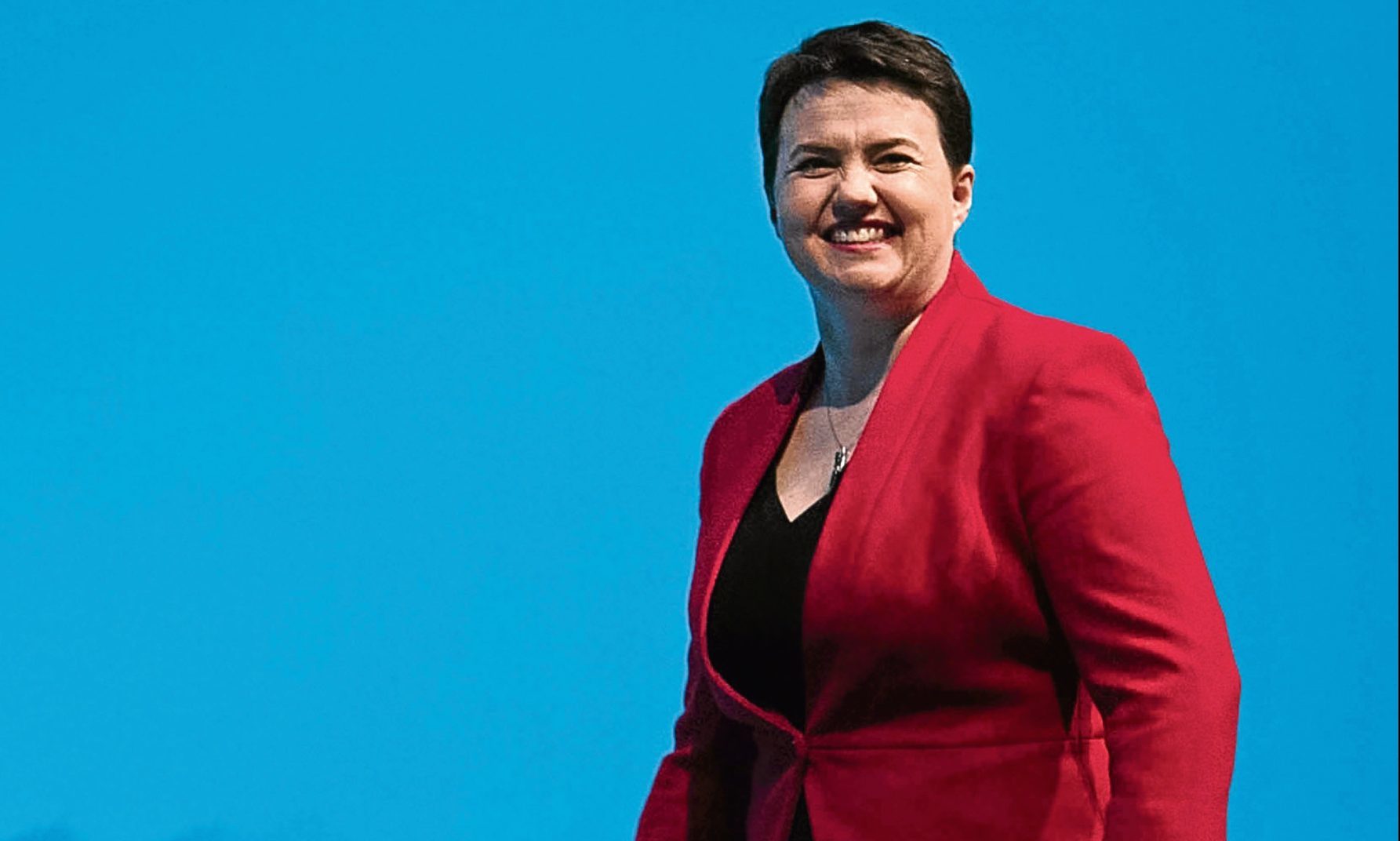The most fevered speculation at the Conservative conference was whether Theresa May would sack Boris Johnson, her loose cannon of a foreign minister.
But a close-run second favourite topic was the prime ministerial ambition of Ruth Davidson. Perhaps because she spoke on the first day, when all the interesting people were still making their way to Manchester, or perhaps because she is such a departure from every other prominent Tory, but the Scottish leader has certainly cemented her reputation this week among the party faithful.
Her appearances, either in the main conference hall or at fringe meetings, have shown her to be as pugnacious in a sea of grandees as she is back home on more familiar turf.
She has used her various platforms to tell MPs what to do but, strangely, no one seemed to be bothered by such effrontery coming from a mere member of the Scottish Parliament. In fact, delegates have hung on her every word, maybe hoping that some of her star dust would rub off.
Even when she scolded the party over its leadership “psychodrama” and said it “needs to get over its nervous breakdown and man up a little bit” the audience just laughed.
To be so feted is unprecedented for a Scottish leader at a national conference, but given that Ms Davidson alone can claim to have had a good election, not that unexpected.
She has relished the limelight and happily handed out her opinions on everything from Mr Johnson’s future – “no one is unsackable” – to bursting Jeremy Corbyn’s bubble with “a clear set of values”.
Only an outsider could ride into town with such swagger but it’s hardly surprising her confidence is seen as refreshing and she is being increasingly tipped for Number 10 at some point in the, possibly not distant, future.
During her big speech on Sunday she brushed aside the rumours, saying she loved London but had no plans to move there herself. However, she then proceeded to give her blueprint for how she would run the country, and not only the Scottish bit.
Let’s hope Mrs May was paying attention because if she survives until the next election – that is assuming she gets through the conference unscathed – she could do a lot worse than adopt almost every item on Ms Davidson’s agenda.
First, in handling the Jeremy Corbyn mania, the Scottish leader advised that his popularity would not last, based as it was on “easy promises that don’t add up”. She had witnessed political momentum come and go when the once-unstoppable Nicola Sturgeon crashed to earth in June, losing 40% of her Westminster seats and half a million votes.
Then, she championed the devolution of power away from London. We need to spread more of our Union outside the capital and move infrastructure and agencies – she didn’t say which ones – to the rest of the nation, to Scotland even.
The “imbalance is getting crazy” when a three-bedroom house in Ilford costs as much as half of Sutherland. She cited other countries, such as the US and Germany, which have clusters of great global cities – “we’re the odd one out”.
This was a bold vision for a Tory, going further than George Osborne’s Northern Powerhouse, and although there was no forewarning, the conference lapped it up. Imagine how well it would go down in the country.
On Brexit she banged heads together, too – “we’re not remainers or leavers, we’re Brits”, she said, a line Mrs May might find herself borrowing in the months ahead, though she will struggle to pull it off with equal aplomb.
Ms Davidson called for serious policies to help the “job-juggling generation”, and said Labour could be beaten by providing well-funded public services, good schools and a strong economy, and offering voters the chance to keep more of their own money because they will spend it better than the state.
Easier said than done, but she managed to enunciate a programme for government that addressed all levels without offending any, some feat for the Conservatives in their current state.
From a purely selfish, Scottish perspective, we must pray that Ms Davidson does not hanker after greatness in London, at least not yet – we need her here to finish the job she has started and oust the Nationalists from government.
That takes us up to 2021 and if she succeeds in becoming First Minister after the next Holyrood election, she will have more than proved her political credentials and could then pursue other goals if she so wishes. And she will still only be in her early 40s.
In the meantime, Mrs May could try to head off disaster by doing as Ms Davidson says. It won’t be the first time she has leaned on a younger, Scottish, female adviser but this one is different: she speaks sense.
